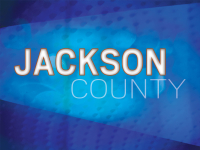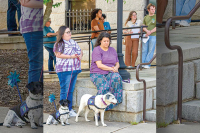A look at The Best Loved Poems of the American People

Two years ago in December, I vowed to read the 11-volume set of Will and Ariel Durant’s The Story of Civilization in 12 months. Unlike resolutions made for New Years and Lent, some of which I break before the sun has set, I read those fat books one after the other and finished the final page with time to spare.
Since then, I have considered other such literary treks: the plays of Shakespeare, some of which I have read and taught; the Bible, where I have read the New but not all of the Old Testament; Marcel Proust’s In Search Of Lost Time, which I have twice started and twice put aside when only halfway through the first of the seven novels. All seemed daunting not in terms of the required effort, but because time and obligations have of late shackled me.
But this past week inspiration struck.
I was visiting my sister in Winston-Salem. In the eclectic selection of books on a shelf in my bedroom was a duplicate of The Best Loved Poems of the American People, an anthology I’d browsed in my adolescence but hadn’t thought of in decades. For the next two days, I enjoyed looking at various verses in that collection. Many of the poets — Keats, Elizabeth Browning, Shelley, James Whitcomb Riley — were familiar to me, but many others were strangers. Some I looked up online — John Bennett, Alice Carey, Louisa Fletcher — where I found some biographical details about them and even better, more of their poems.
In this collection we find no modernists, no T.S. Eliot, whose work appeals to me, or Ezra Pound, whose poems are mostly unfamiliar, or any poets published in the last hundred years. Robert Frost once said of “free” verse that it was like playing tennis without a net, and in The Best Loved Poems of the American People we find net, ball, and racquets in place. Meter, form, and rhyme count for these practitioners of verse.
I also looked into the history of the book itself, and learned that The Best Loved Poems of the American People was published in 1936, in the depths of the Great Depression, a risky time to put out a fat compilation — 575 poems in 670 pages — when so many families were battling to put soup and beans on the table. I also discovered this collection is still in print and has in the last 83 years sold more than 1,500,000 copies.
Related Items
Here is a mountain — make that a hill — I can conquer.
In the next year, I will read aloud — poetry demands a spoken voice — these poems, two or three of the short ones daily, one a day of the longer ones, like “The Charge of the Light Brigade.” This task will take only minutes every morning, but will bring, or so I hope, some real benefits.
First, like so many Americans, I read little poetry. When I was teaching English literature to seminars of homeschooling students, writers from Richard Lovelace to Emily Dickinson, from Edna St. Vincent Millay to Seamus Heaney, were our daily bread and meat. But with those classes now in my past, I tend to go to history, biography, and fiction for my reading. A return to verse will do me good.
Then, too, a dose of poetry every day may strengthen the rhythm and cadence of my own sentences. Other writers have used such works as the King James Bible or the plays of Shakespeare as springboards for their writing. Perhaps poetry will lead me through a similar gymnasium of exercise.
Moreover, I will make the acquaintance of writers long gone to graveyards who still have some sage advice for me and for other readers. Here, for example, is R.L. Sharpe’s “A Bag of Tools:”
Isn’t it strange
That princes and kings,
And clowns that caper
In sawdust rings,
And common people
Like you and me
Are builders for eternity?
Each is given a bag of tools,
A shapeless mass,
A book of rules;
And each must make—
Ere life is flown—
A stumbling block
Or a steppingstone.
The stanza below from Rollin J. Wells’ “Growing Old” expresses my own sentiments as I wend my way into old age, especially the line “A little more real the things unseen:”
A little more leisure to sit and dream,
A little more real the things unseen,
A little nearer to those ahead,
With visions of those long loved and dead;
And so we are going where all must go—
To the place the living may never know.
Finally, in part because of its age, in part by design — the Doubleday editor was Hazel Felleman, the writer of the “Introduction” Edward Frank Allen — The Best Loved Poems of the American People will also counterbalance what I read online every day, a task performed both for purposes of work and from curiosity. The madness of our time — the weird cultural issues, our nasty and bitter politics, the snarky anonymous attacks — will not be found in this volume. These poems speak of the ancient verities: faith, romance, motherhood, friendship, patriotism. They will remind me of the world I believed in as a boy so long ago. They will offer a haven of truth, comfort, and sanity in our present storm of lies and lunacy.
Maybe these poems will even inspire me to become a better person, like the wise old owl in Edward Hersey Richards’ short verse by the same name:
A wise old owl lived in an oak;
The more he saw the less he spoke;
The less he spoke the more he heard:
Why can’t we all be like that bird?
Right now mine is a party of one. Feel free to join the festivities.
(Jeff Minick is a writer and teacher. This email address is being protected from spambots. You need JavaScript enabled to view it.)









